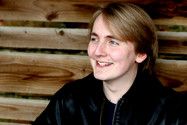
IEM Identification
Combining metabolomics and DNA sequencing could be the key to discovering new inborn errors of metabolism in children.
Although individually exceedingly rare, together inborn errors of metabolism (IEM) make up a sizeable portion of the broader spectrum of genetic disorders. Nevertheless, they remain underdiagnosed and undertreated (1). A multidisciplinary group based at the University of Texas Southwestern Medical Center in Dallas are working to improve our understanding of these diverse conditions. In a recent study, they combined genomic and metabolomic data to diagnose lipoyltransferase-1 deficiency (LIPT1D), an IEM characterized by abnormal brain development, seizures, and lactic acidosis (2). The team are optimistic that the new approach could provide the basis for more routine identification and treatment of IEMs.
“We’ve long known you can treat many IEMs if you pick up the underlying metabolic disturbance quickly,” says Ralph DeBerardinis, Professor of Pediatric Genetics and Metabolism at UT Southwestern and a co-author of the paper. Phenylketonuria (PKU), a well-known IEM, is characterized by a failure to metabolize phenylalanine, resulting in the accumulation of phenylalanine and related metabolites in blood and urine – abnormalities easily detected by laboratory testing (3). But many other diseases remain poorly characterized and much more difficult to pinpoint – something that DeBerardinis hopes to address with advanced techniques. “It has become apparent that applying broad profiling technology will allow us to understand metabolic disturbances at a more granular level, helping us to uncover these conditions and ultimately to develop new therapies,” he says (4).
Part of the problem is that current diagnostic approaches are narrow in scope. DeBerardinis certainly believes so; after all, even the most sophisticated clinical tests can only pick up a small fraction of potential markers. “You might be able to detect 50 biomarkers or so in a high-end laboratory,” says DeBerardinis. “But there are potentially thousands of detectable metabolites in the blood – each of which could be associated with a novel IEM.”
Could the combination of broad genomic and metabolomic profiling described by the group give a more holistic overview of a patient’s potential disease profile, and even provide clues on how to tackle the deficiency? The early evidence is promising – the team identified a variant in LIPT1, a gene that codes for the lipotransferase required for 2-ketoacid dehydrogenase (2KDH) function. They were able to associate the variant with abnormal levels of various lipids, amino acids, and organic acids. The result has given DeBerardinis and his team confidence that their approach has merit. “This kind of information, this characterization of metabolic anomalies, can help us start to think about disease treatment,” DeBerardinis says.
Of course, any abnormalities will have to be validated in patients – something DeBerardinis is quick to highlight: “We’ve already assessed the metabolic profile of around 500 patients suffering from an IEM,” he says. “Those include about 100 with known IEMs and many others with diseases that we believe are novel.” The results confirm something DeBerardinis has long suspected – that every person is metabolically unique, just as they are genetically unique. “This approach allows us to identify new connections on the metabolic chart and hopefully develop ways to compensate for metabolic defects in IEMs.”
There certainly seems to be plenty of reason for optimism, but DeBerardinis is keen to stress caution, at least for now. “We really need to know more about metabolic variability in the normal population first,” he says. To get that data, the team are looking further afield. “We have established collaborations with medical geneticists in Pakistan, where the frequency of undiagnosed IEMs is high. Because that population has remained relatively understudied, there’s opportunity for discoveries that will help us better understand and treat IEMs,” says DeBerardinis. And although that project only began a few months ago, progress is already being made. “We have around 150 samples so far – we’re very excited to see where the work takes us.”
- D Waters et al., “Global birth prevalence and mortality from inborn errors of metabolism: a systematic analysis of the evidence”, J Glob Health, 2, 021102 (2018). PMID: 30479748.
- M Ni et al., “Functional Assessment of Lipoyltransferase-1 Deficiency in Cells, Mice, and Humans”, Cell Rep, 30, 1376-1386 (2019). PMID: 31042466.
- NA Hafid, J Christodoulou, “Phenylketonuria: a review of current and future treatments”, Transl Pediatr, 4, 304-317 (2015). PMID: 26835392.
- A Tebani et al., “Clinical Metabolomics: The New Metabolic Window for Inborn Errors of Metabolism Investigations in the Post-Genomic Era”, Int J Mol Sci, 17, 1167 (2016). PMID: 27447622.
















